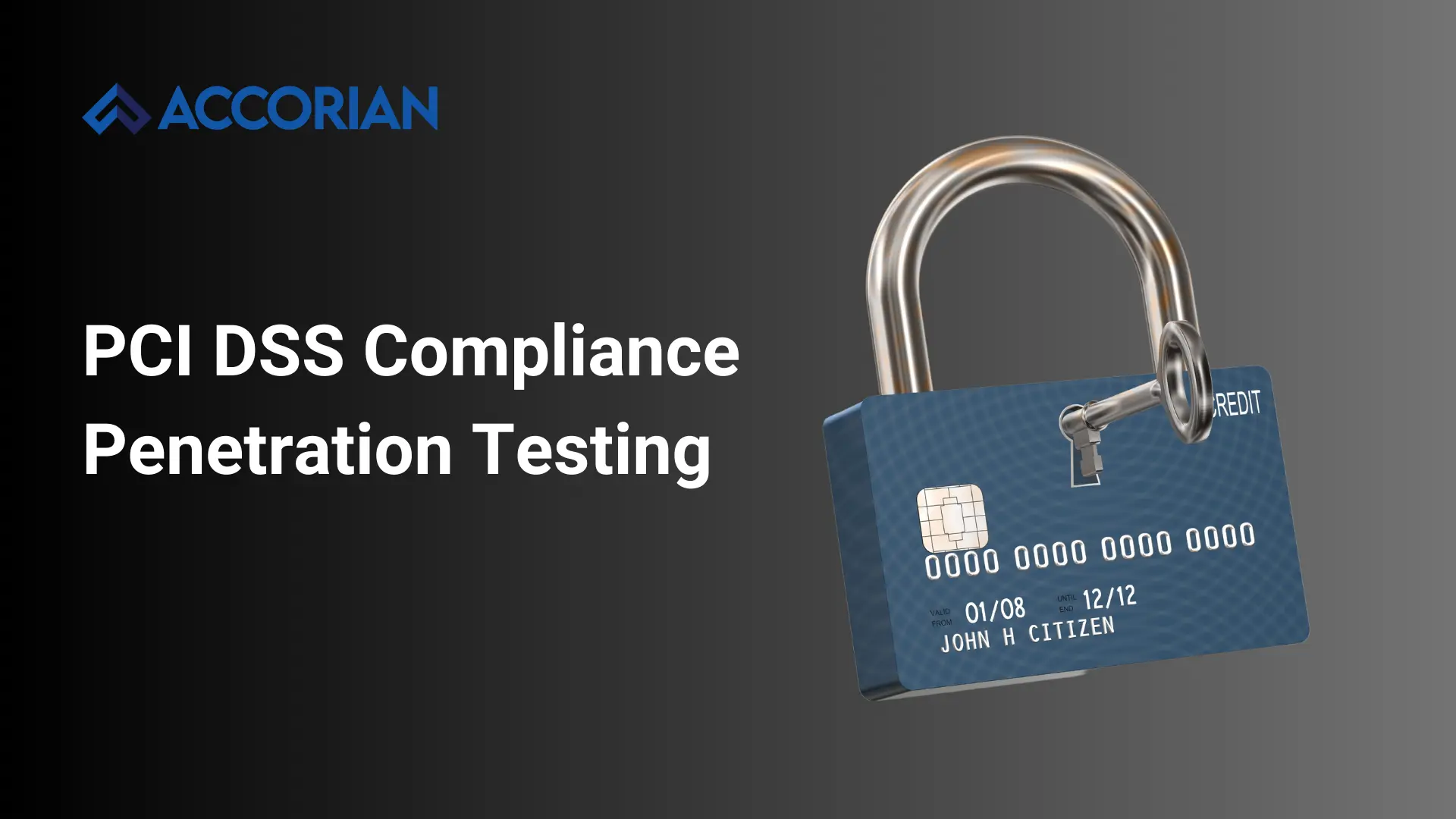“Compliance is no longer just about ticking boxes, but about embracing security as a mindset.” (Kevin Mitnick) It’s not enough to simply meet the requirements; organizations must adopt a proactive and vigilant approach to ensure their systems’ security and build their customers’ trust. Recent statistics show that only 27.9% of firms achieved complete PCI DSS compliance in their relevant industry. To prevent data breaches and protect sensitive information, it is imperative for organizations to maintain robust PCI Compliance.
What is PCI DSS Compliance Penetration Testing?
A PCI pen test actively conducts a penetration test in adherence to PCI DSS standards to assess the security of cardholder data. The cardholder data primarily includes credit card numbers and track 2 data. To ensure its security, the PCI Council has established comprehensive guidelines and frameworks.
The Payment Card Industry Data Security Standard (PCI DSS Compliance) is intended to safeguard companies and their clients against payment card fraud and theft. Its goal is to assist organizations in anticipating and identifying both known and unknown system vulnerabilities that could result in data breaches. To achieve this, PCI DSS pen tests are conducted by experts in their field.
Penetration Testing
Penetration testing is a manual process that goes one step deeper than an automatic vulnerability scan. Although vulnerability scans are operated by machines and may not be highly accurate, pen tests involve manual processes. The testers specifically look for security issues that automated scanners may miss or detect as false positives. They aim to exploit these vulnerabilities when found to understand the potential impact they can have on the organization’s business activities.
Achieving PCI DSS Compliance: Understanding the Requirements
Typically, any organization assigned a merchant number by its payment processor must actively adhere to PCI standards.
However, the extent of assessments required would vary depending on the number of transactions processed annually by the merchant. To assess an organization’s compliance with the PCI DSS, some firms may use an Internal Security Assessor (ISA) program, while others may employ a Qualified Security Assessor (QSA – an independent security agency recognized by the PCI Security Standards Council). Similarly, based on their payment card volumes and processes, organizations need to evaluate and assess which PCI-SAQ (PCI Self-Assessment Questionnaire) tool is applicable to them. The PCI-SAQ is a validation tool designed to assist merchants and service providers in self-evaluating their PCI DSS compliance.
Types of PCI DSS Penetration Tests
1. Web Application Penetration Testing
This application involves performing a planned and simulated attack on an organization’s web application to exploit existing vulnerabilities. The purpose of this testing is to determine the system’s security level and assess whether the system is secure or not.
2. External Network Penetration Testing
This involves conducting a comprehensive security evaluation of an organization’s perimeter systems. It is a thorough assessment that aims to identify vulnerabilities and weaknesses in the external network infrastructure to prevent unauthorized access and potential cyberattacks. An organization’s perimeter comprises systems that are directly reachable via the Internet. These systems face high vulnerability due to their open exposure to potential threats and frequent targeting for attacks.
3. Internal Network Penetration Testing for Cardholder Data Environment (CDE) and its supporting infrastructure
This involves conducting security assessments within the organization’s network. It includes evaluating all internal network assets to ensure their inclusion in this testing category. The purpose of internal network penetration testing is to simulate the actions of a malicious insider attack or an external attacker who has gained unauthorized access to the network. By emulating such scenarios, we can identify vulnerabilities and weaknesses, enabling the organization to strengthen its defenses and protect sensitive data within the CDE and its supporting infrastructure.
4. Segmentation Testing
This testing verifies whether less secure networks can communicate with highly secure networks, such as the Cardholder Data Environment (CDE). It involves actively conducting penetration tests to ensure the presence of proper network segmentation controls, effectively preventing unauthorized access and data leakage. Our goal is to actively confirm that sensitive systems are adequately isolated from less secure networks, thus maintaining the security of the CDE and protecting cardholder data.
5. Wireless Network Penetration Test
This involves identifying misconfigurations in authorized wireless networks while ensuring the absence of unauthorized access points. With the prevalence of wireless technology, hackers can easily get into your network. To mitigate the risk, pen testers thoroughly evaluate your wireless networks’ security, assessing your existing defenses and identifying any vulnerabilities.
6. Social Engineering Penetration Test
This involves simulating social engineering attacks, such as phishing emails or phone calls, in order to assess the efficiency of an organization’s security awareness training and employees’ sensitivity to social engineering strategies.
SAQ and Corresponding Pen Test Requirements
A Self-Assessment Questionnaire (SAQ) is a validation tool. It is designed to aid merchants and service providers in self-evaluating their PCI DSS compliance.
Sl.No | Type of Assessment | Penetration Testing |
1. | PCI Full Audit (Report on Compliance) | Annual:
Bi-annual:
Quarterly:
|
2. | SAQ A, SAQ B, SAQ C-VT, SAQ | None. No tests need to be performed if an |
3 | SAQ A-EP | Annual:
Bi-annual
Quarterly:
|
4. | SAQ B-IP
| Quarterly:
|
5. | SAQ C | Bi-annual
Quarterly:
Internal Network Scanning for CDE & supporting |
6. | SAQ D | Annual:
Bi-annual
Quarterly:
|
Accorian: Your Trusted PCI Penetration Testing Provider
Accorian is a leading cybersecurity firm that offers comprehensive services to assist companies in achieving and maintaining PCI DSS compliance. We possess the qualifications of a PCI ASV (Approved Scanning Vendor) and a PCI QSAR (Qualified Security Assessor Representative), enabling us to support organizations in assessing their network security posture.
Our skilled penetration testing experts identifies potential vulnerabilities and assesses the overall security of your network.
We provide a range of specialized services tailored to meet the specific requirements of PCI DSS compliance.
Contact us for a comprehensive cybersecurity assessment to achieve compliance, enhance security, and protect your business and customer data.




